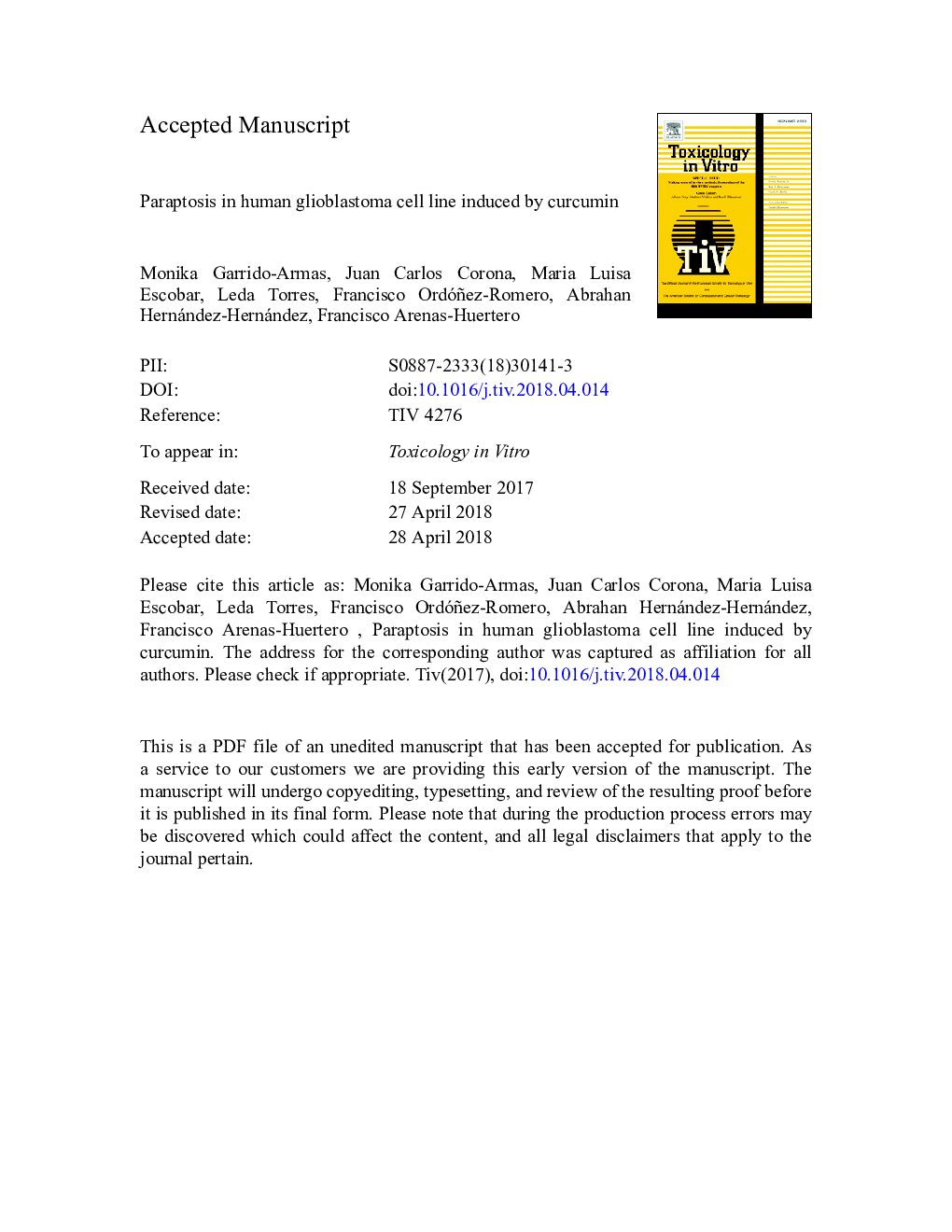| Article ID | Journal | Published Year | Pages | File Type |
|---|---|---|---|---|
| 8553781 | Toxicology in Vitro | 2018 | 35 Pages |
Abstract
Curcumin is a polyphenol compound extracted from Curcuma longa plant, is a molecule with pleiotropic effects that suppresses transformation, proliferation and metastasis of malignant tumors. Curcumin can cause different kinds of cell death depending of its concentration on the exposed cell type. Here we show that exposure of the glioblastoma cell line A172 to curcumin at 50â¯Î¼M, the IC50, causes morphological change characteristic of paraptosis cell-death. Vesicles derived from the endoplasmic reticulum (ER) and low membrane potential of the mitochondria were constantly found in the exposed cells. Furthermore, changes in expression of the ER Stress Response (ERSR) genes IRE1 and ATF6, and the microRNAs (miRNAs) miR-27a, miR-222, miR-449 was observed after exposure to curcumin. AKT-Insulin and p53-BCL2 networks were predicted being modulated by the affected miRNAs. Furthermore, AKT protein levels reduction was confirmed. Our data, strongly suggest that curcumin exerts its cell-death properties by affecting the integrity of the reticulum, leading to paraptosis in the glioblastoma cells. These data unveils the versatility of curcumin to control cancer progression.
Keywords
ATF6GAPDHRT-qPCRIC50HBSSmRNAIPAIRE1PVDFmiRNAsDMEMBcl2TLDAPBSTMRMprotein kinase R-like endoplasmic reticulum kinaseinositol-requiring kinase 1BiPDNADulbecco's modified Eagle's mediumMTTROSAktdeoxyribonucleic acidRNAribonucleic acidSDS-PAGESodium dodecyl sulfate polyacrylamide gel electrophoresisendoplasmic reticulum stress responseTemThiazolyl blue tetrazolium bromideIngenuity Pathway AnalysisCHOPMinminutespolyvinylidene difluoridemessenger ribonucleic acidmicroRNAsRINendoplasmic reticuluminhibitory concentration 50activating transcription factor 6Phosphate-buffered salineHank's balanced salt solutionCell deathTransmission electron microscopyParaptosisPERKSerine-threonine kinaseCurcuminglyceraldehyde-3 phosphate dehydrogenaseReactive oxygen species
Related Topics
Life Sciences
Environmental Science
Health, Toxicology and Mutagenesis
Authors
Monika Garrido-Armas, Juan Carlos Corona, Maria Luisa Escobar, Leda Torres, Francisco Ordóñez-Romero, Abrahan Hernández-Hernández, Francisco Arenas-Huertero,
